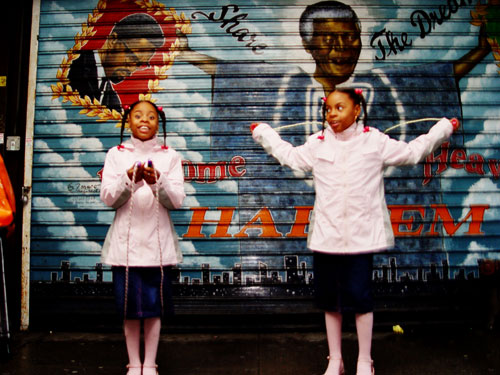 |
The Making of Americans, 2004 Book publication by One Star Press, 2005 |
While the title of Getrude Stein’s book The Making of Americans (written in 1908-09 and published in 1925) is a genealogical approach to American culture, presenting creation’s infinite possibilities, Caecilia Tripp’s interpretation is a real opening up of this musical and visual work. Although repetition is the very essence of Gertrude Stein’s work, this repetition allows for precisely the juxtaposition of the sounds and images in the film, as though the desire to take the very notion of repetition literally should generate a multitude of dualities starting with reality and representation, images and copies, music and recording, voice and rhythm. The importance of African-American culture in the United States has always been defined by the recognition given to its music, performance and oral narration. These elements are also brought together in Stein’s opera, but it is their concrete application in the context of black vernacular performance that Caecilia Tripp chooses to show. Starting with a history (and from its start), she proposes back-and-forth movements in form and sound that suggest at once the incessant passage between the individual and the collective and also between scream and monologue, between interior and exterior space. This duality is further reinforced as the venues are evoked through nocturnal and luminous images of the Apollo Theater. The scene in which the meeting or splitting in two of the identity is played out is the one with the marionette manipulated by the magician in the smooth suit, the one with the little twin girls who add to the turmoil with their reflections in the mirror. “Any one is one” emphasizes the text, and one also hears “it is always a question of being”. While the Diva travels the streets of New York in a limousine which accentuates the quick horizontal movement of the image, the Poet affronts the viewer in a vertical scene reinforced by the walls covered with posters which seem to hold him up and maintain him in a most intransigent urban reality. Elvan Zabunyan 1 James A. Snead, « Repetition as a Figure of Black Culture », in Out There, Marginalization and Contemporary Cultures ; New York, Cambridge, The New Museum of Contemporary, The MIT Press, 1990, p. 220
|
 |
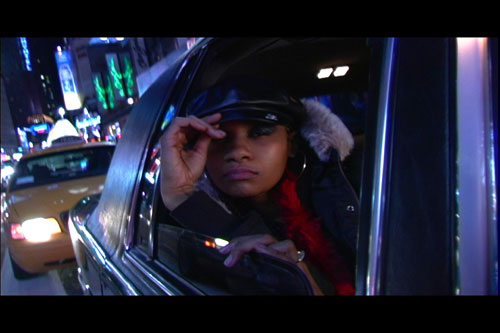 |
| The Making of Americans, 2004 Color & sound video, 18 min. © Caecilia Tripp & Zeuxis Films LLC NY (Videostills: Jason G. Lewis) |
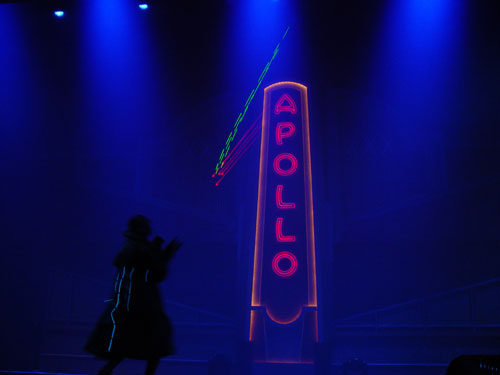 |
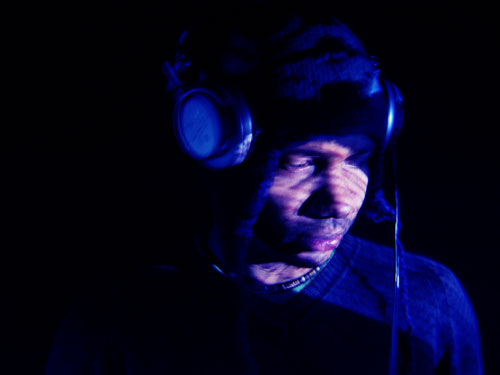 |
| The Making of Americans, 2004 Color & sound video, 18 min. © Caecilia Tripp & Zeuxis Films LLC NY (Videostills: Jason G. Lewis) |
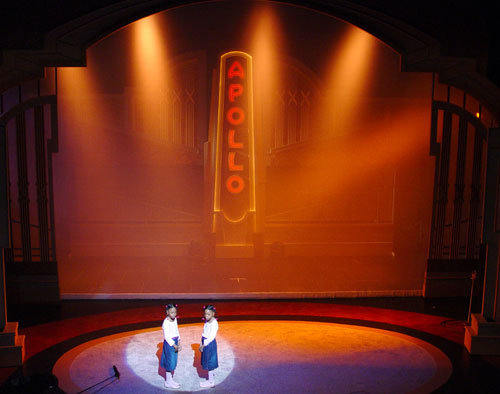 |
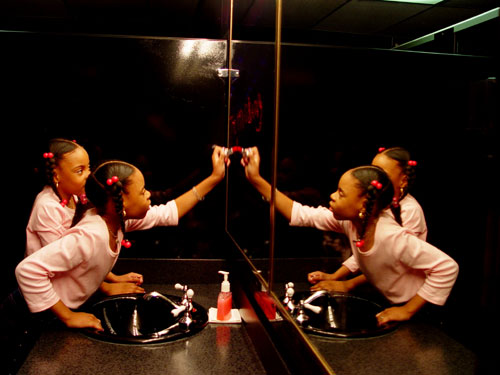 |
| The Making of Americans, 2004 Color & sound video, 18 min. © Caecilia Tripp & Zeuxis Films LLC NY (Videostills: Jason G. Lewis) |
|
Galerie
Maisonneuve T/F +33 1 43 66 23 99
contact@galerie-maisonneuve.com
|